PARABASIS is an exhibition project born from a series of conversations about the possibility of formulating new formal strategies on the representation of the work of art. The original stimulus arose from parallelisms that emerged between investigative practices belonging to past and present artistic production. More precisely, we looked at a certain European production, mostly Southern, carried out under the fascist regime and in the years immediately following. We observed a series of analogical correspondences with a certain non-aligned, contemporary production that demonstrates a similarly anarchoid, if not anti-academic attitude, while also maintaining rigorous, compositional methods. Ultimately, extensive iconographic research and pervasive conversation shared with the various artists and with Di Caro, led to a showcase of highly significant, yet rarely seen work from artists of emergent, mid-career, as well as historical positions.
The artworks taken into examination, stemming from international experiences and being often inspired by specific cultural references, each tend to radicalize the weakness of quotation as a consolidated, conceptual source. Furthermore, if observed from an angle that considers the daily relationship with things, the meaning of colors and form in the evocation of a memory, all the works involved can be seen as allegorical transits into human existence, or rather, as a variation to the peremptory nature of the real. Maybe it is a coincidence, but the revaluation of formal values over content (and the understanding of styles as forms of vision and representation) was theorized at the end of the nineteenth century by von Mar??es and his two friends 1 right here in Naples. It is therefore extremely fascinating to note that, in 2020, objective research on the behavior of forms is also entertained by artists who operate from expressionist and surrealist positions (and not strictly formalist or conceptual.) In his essay On evaluation (1876), Fiedler puts it clearly: "What art creates is not a second world alongside another that would exist anyway without it, but through artistic consciousness, art produces the world for the first time".
Eight excursus were then diachronically adjoined and unleashed. The respective interventions offered themselves instrumentally, for the constitution of a moment: an intermezzo that is close to a parabasis - a term that literally means the act of walking sideways, deviating, transgressing. Parabasis is the comedic brake established by the choir when it takes off its mask and turns directly to the spectators, returning to its original role of komos - a cheerful, insolent Dionysian cortege. Parabasis as "the interruption in which suddenly the origin appears, breaking and disrupting the expected development of the action." 2
As Pasolini used to say, art is a force of the past - still a spiritual fact. When we are invested by it, we realize that it always contains elements of past reflections that transform us. Precisely, by emphasizing its non-contemporaneity, art can accentuate its own note out of tune in the choir. Only then can a truly modern dialogue with the present be initiated.
The mediocrity of our universes essentially depends on our powers of enunciation. How can we recover this power today? A managerial/synthetic language is being substituted for the language of our inner character. Contemporary language has been "turned", in the way the police use this term, since it aims at disinforming us about ourselves, by mis-teaching us to feel better about unlearning our ability to discern. It is particularly the psychological utilization of terms such as "motivation", "to manage", "to valorize" and even "to negotiate" that leads to the devaluation of any sensible approach to the self.
Language, though damaged, remains a weapon that anyone can reclaim, here and now. Through it, it is possible to retake from this world a part of it that is being taken away from us day by day. A bit like the anarchists at the beginning of the 20th century who engaged in individual reprisals, seizing every occasion to retake from society a part of what it had taken from them. Because language is a strange treasure that doesn't belong to anyone in particular, but everyone can enrich it and be enriched by it.
2019, Francesca Lacatena
1 The relationship between Hans von Mar??es, theorist Konrad Fiedler and the sculptor A. von Hildebrand had considerable importance for the formulation of the so called theory of "pure visibility" (reine Sichtbarkeit). In 1873, von Mar??es was commissioned to paint what is considered his masterpiece, the cycle of frescoes that decorates the library of the Anton Dohrn Zoological Station, in Naples.
2 Giorgio Agamben, Pulcinella or Entertainment for children, Seagull Books, 2019.
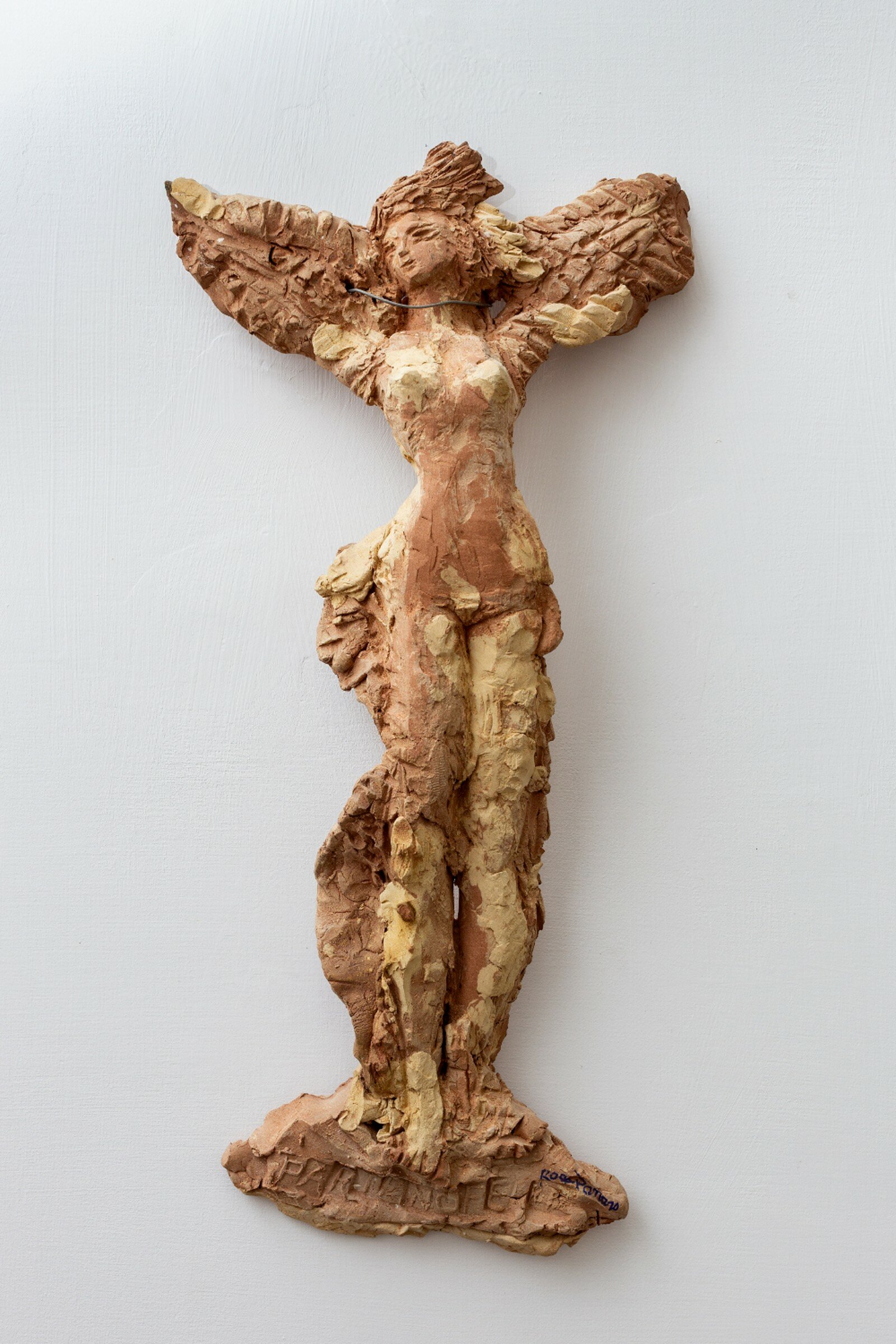
Rosa Panaro
'Parthenope', 1977
Clay
40 × 20 cm
Unique
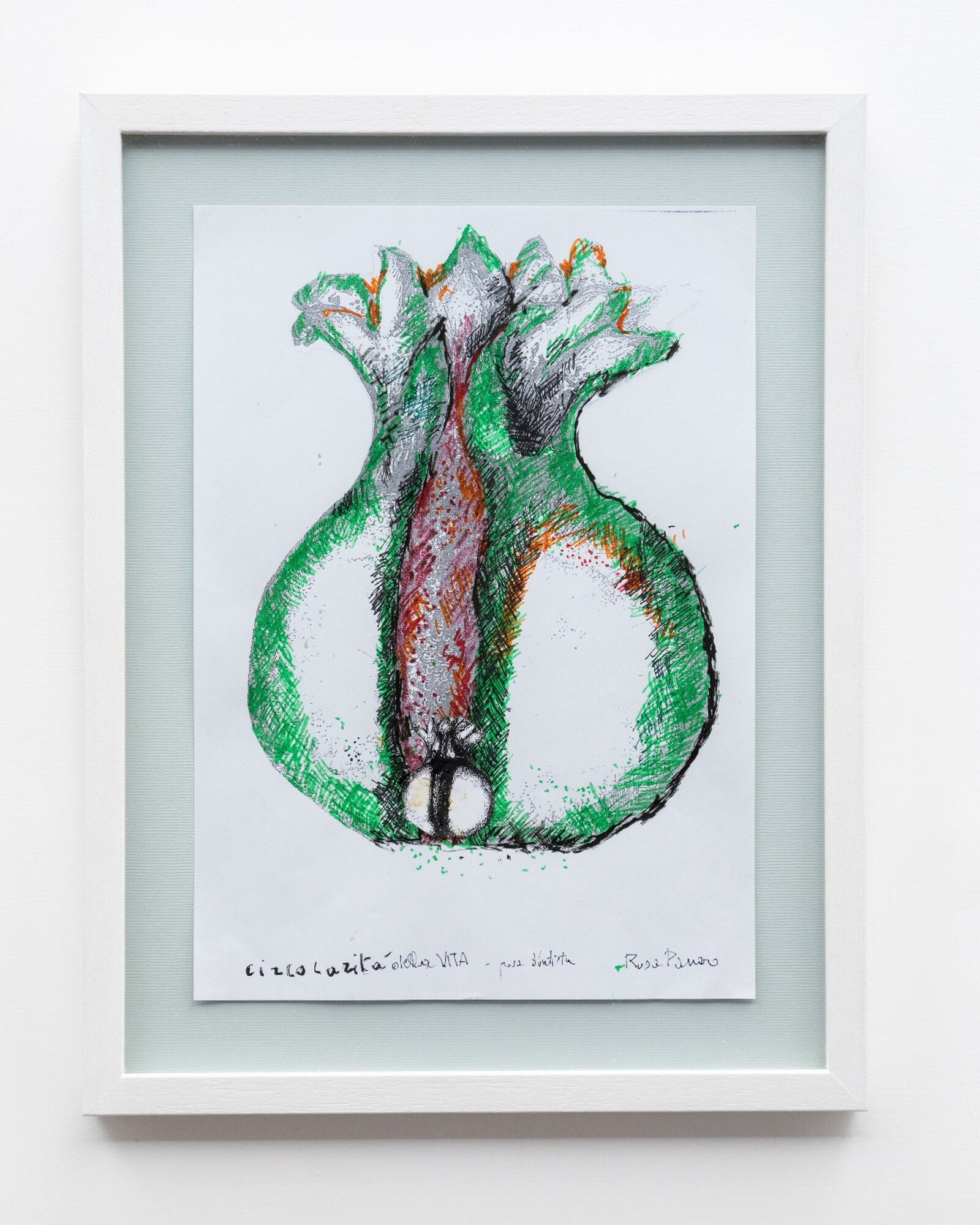
Rosa Panaro
'Circolarità della vita - posa d'artista', 2019
markers and colured pens on Xerox
29.7 × 21 cm
Unique
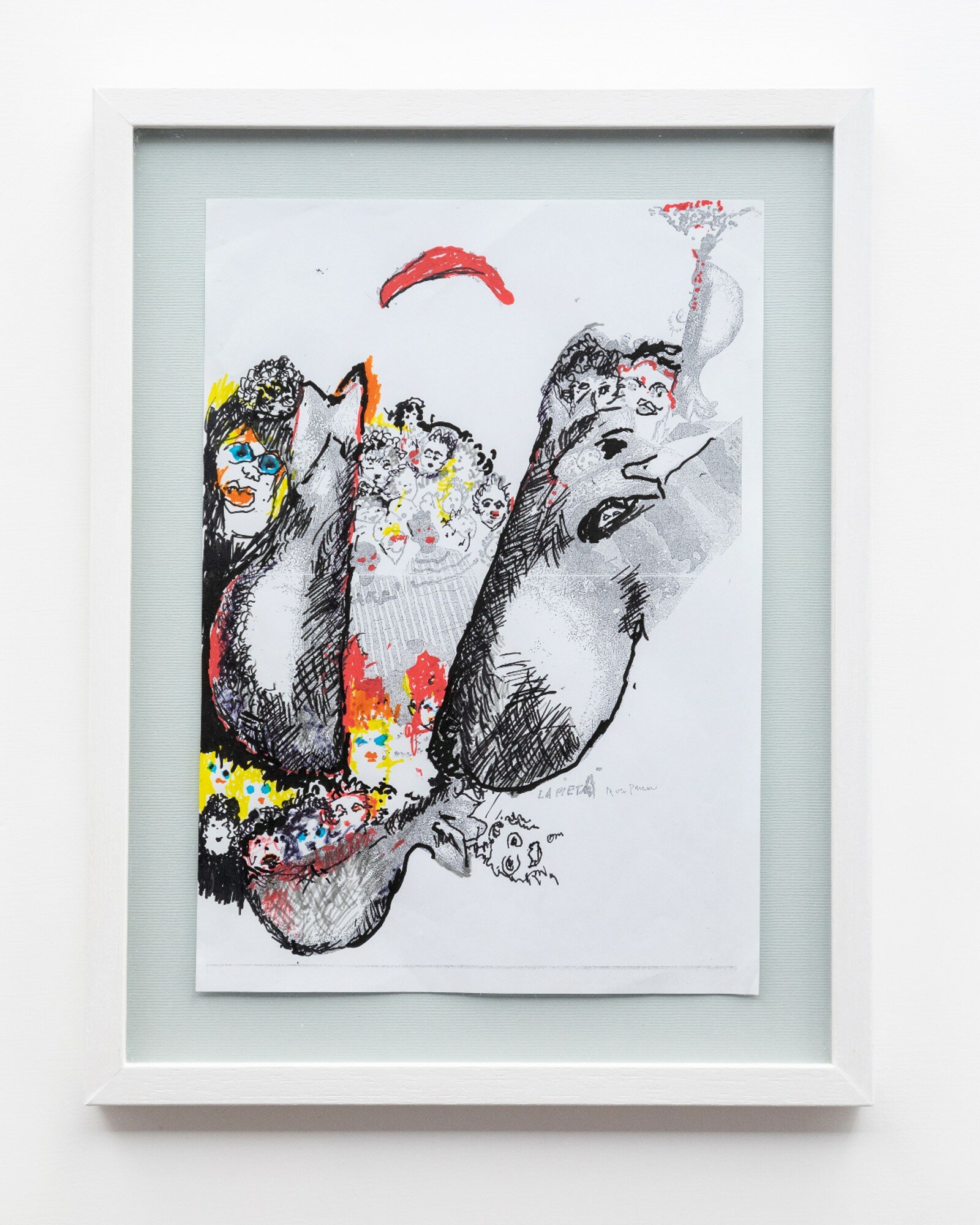
Rosa Panaro
'La pietÃ', 2019
markers and colured pens on Xerox
29.7 × 21 cm
Unique
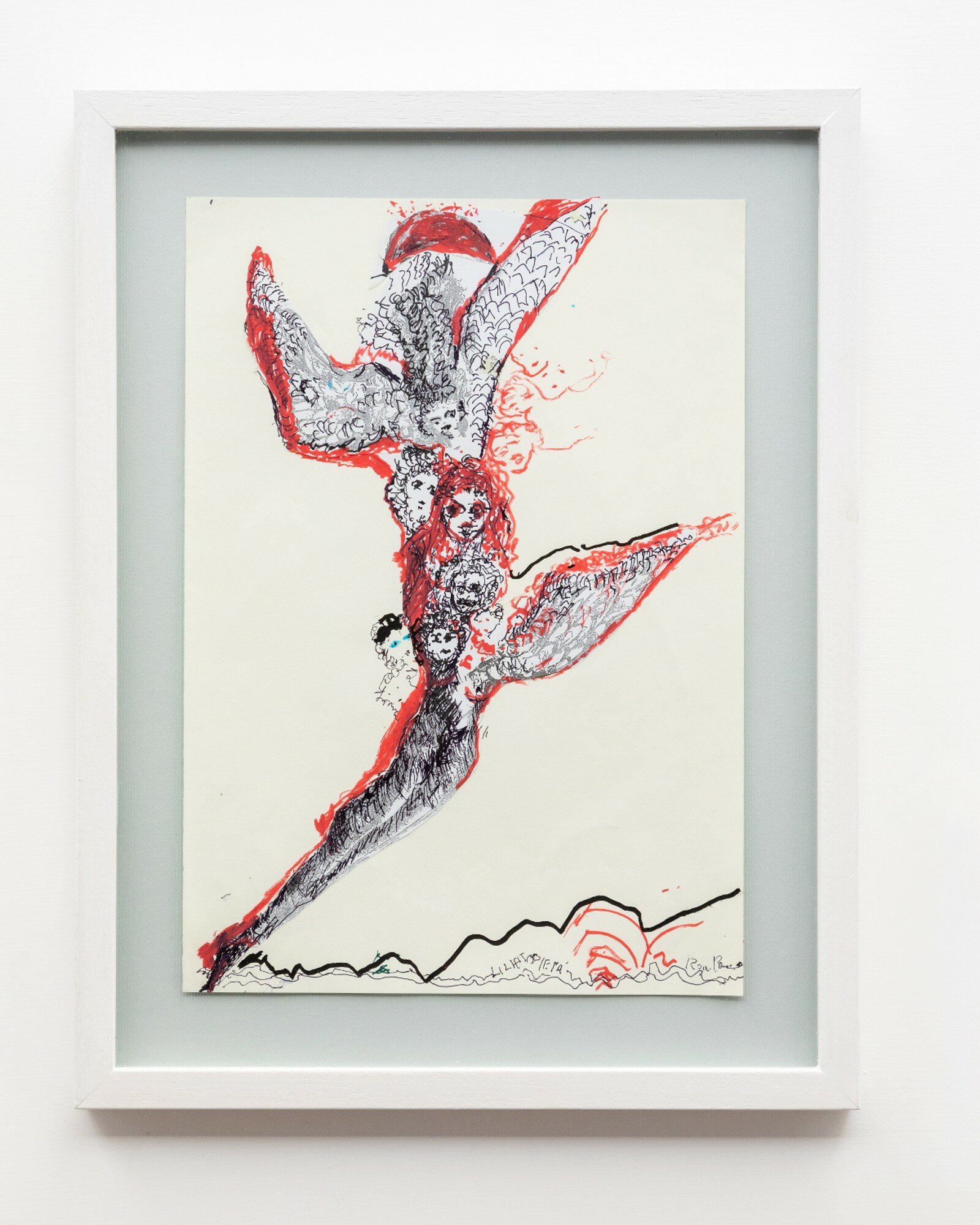
Rosa Panaro
'Lilith/PietÃ', 2019
markers and colured pens on Xerox
29.7 × 21 cm
Unique
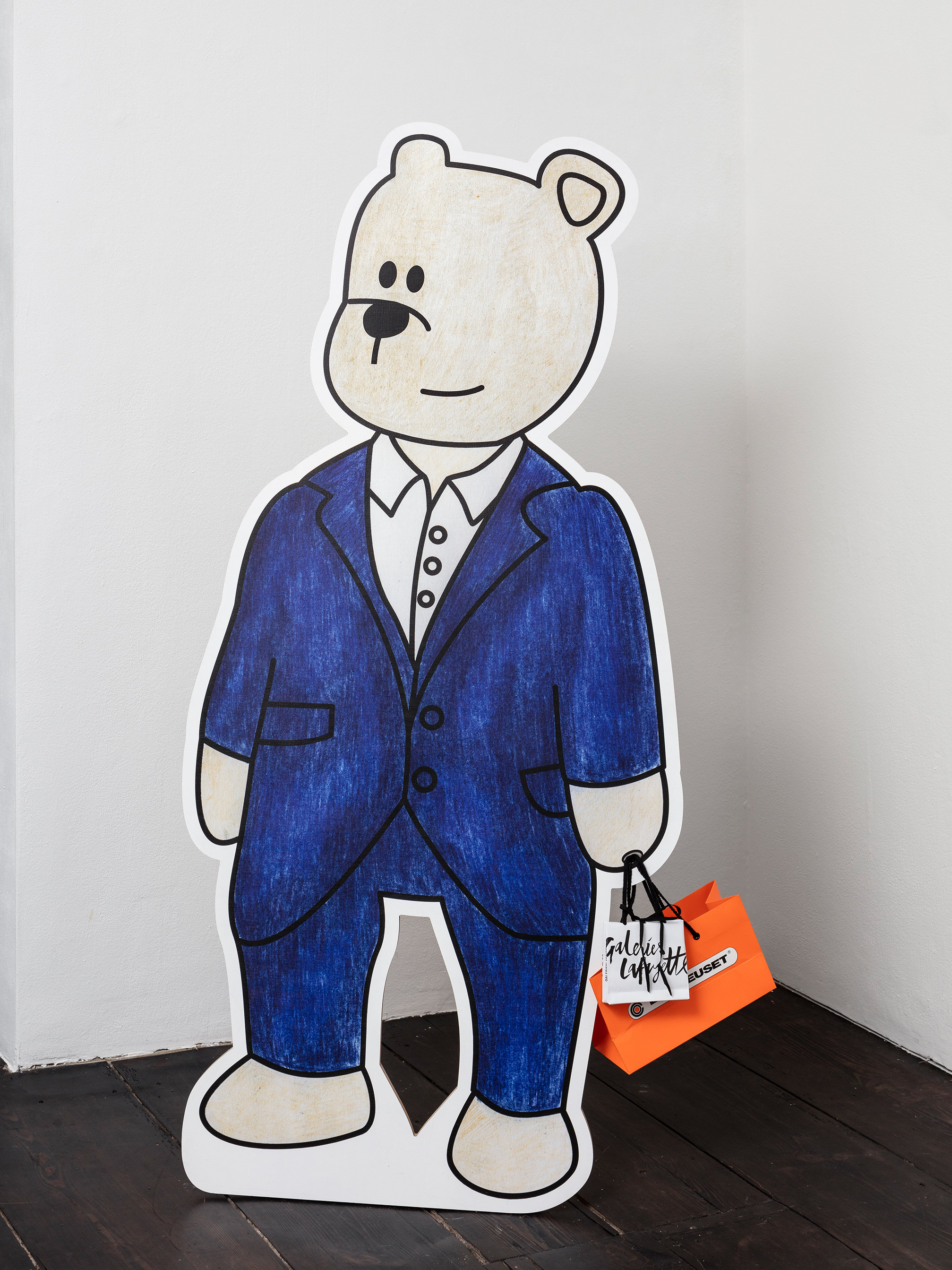
Timothy Davies
'Single Bear with Shopping (Friedrichstraße)', 2019
Paint and UV direct print on plywood, shopping bags
146 × 85 × 34 cm
Unique